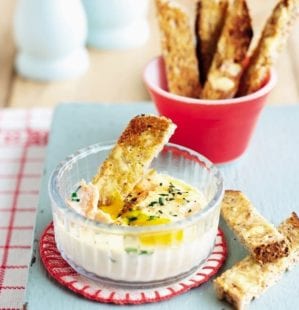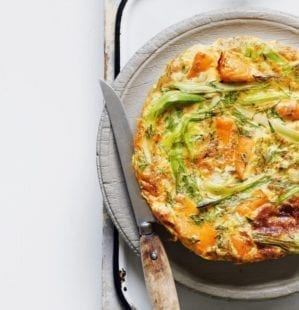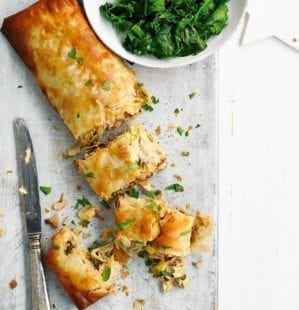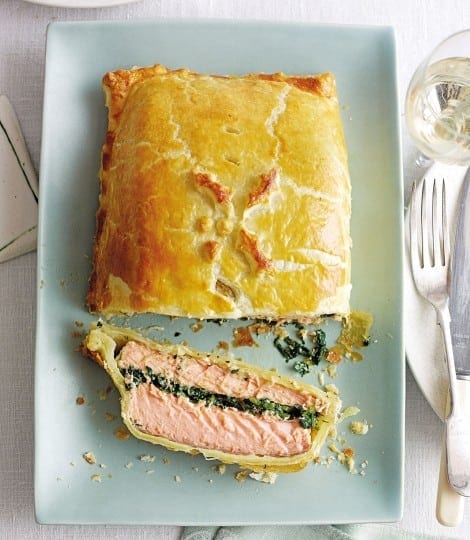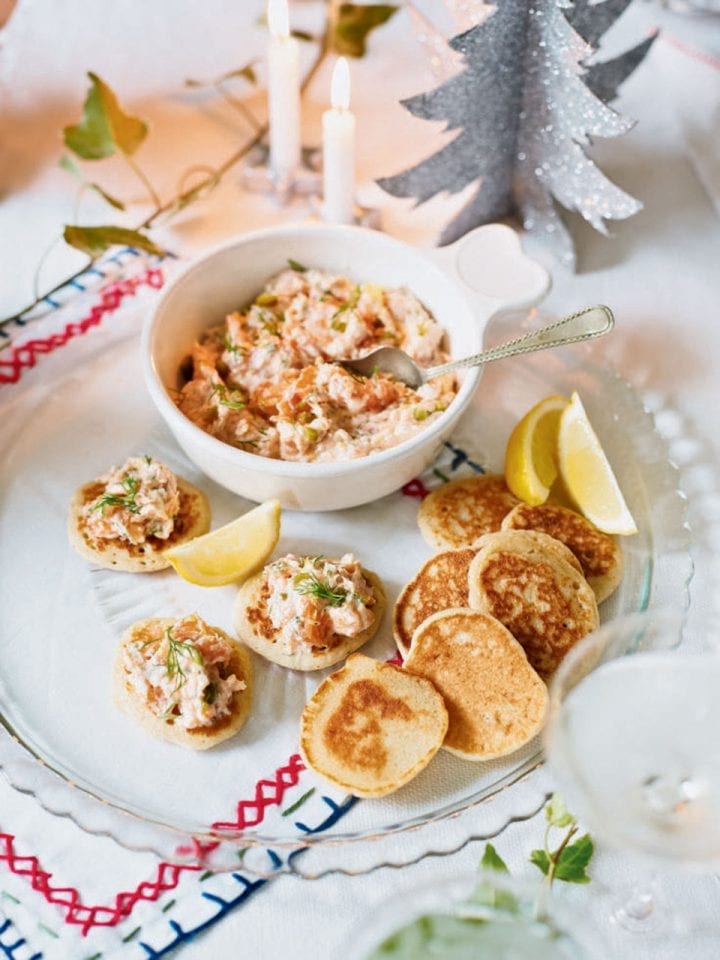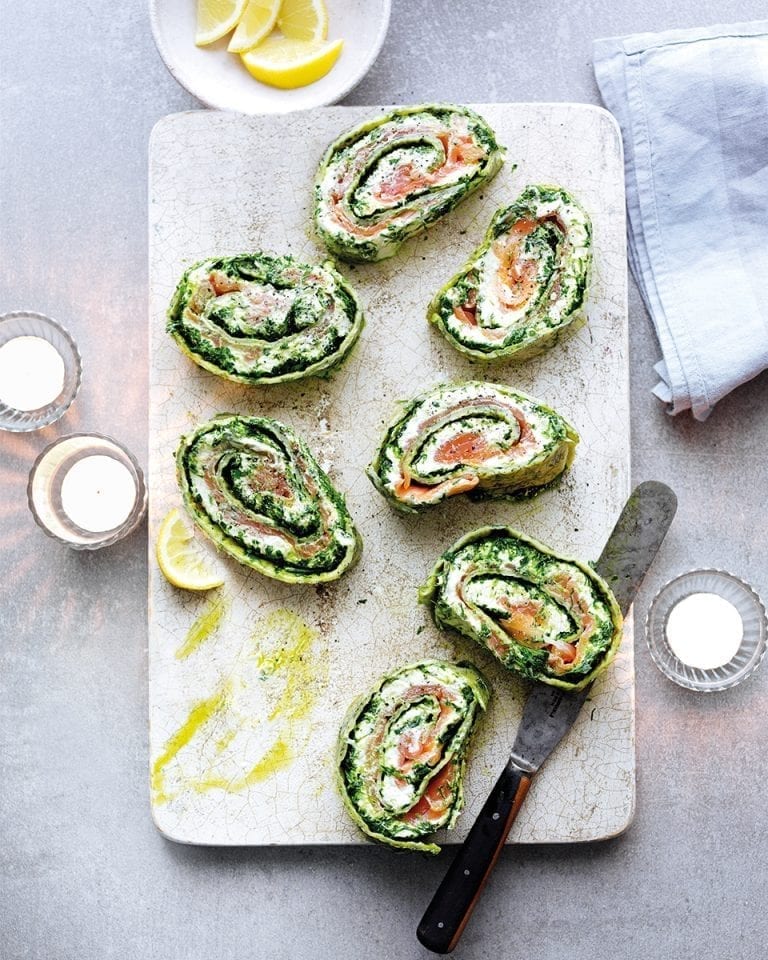Behind the scenes: Inside the H Forman & Son factory
Over the past 40 years, smoked salmon has gone from a luxury artisan product to supermarket sandwich filler, and not without sacrifices to quality and confusion over its origins. Who better to dispel the myths and show us how it should be done than H Forman & Son, a company with over 100 years’ experience in salmon-smoking?
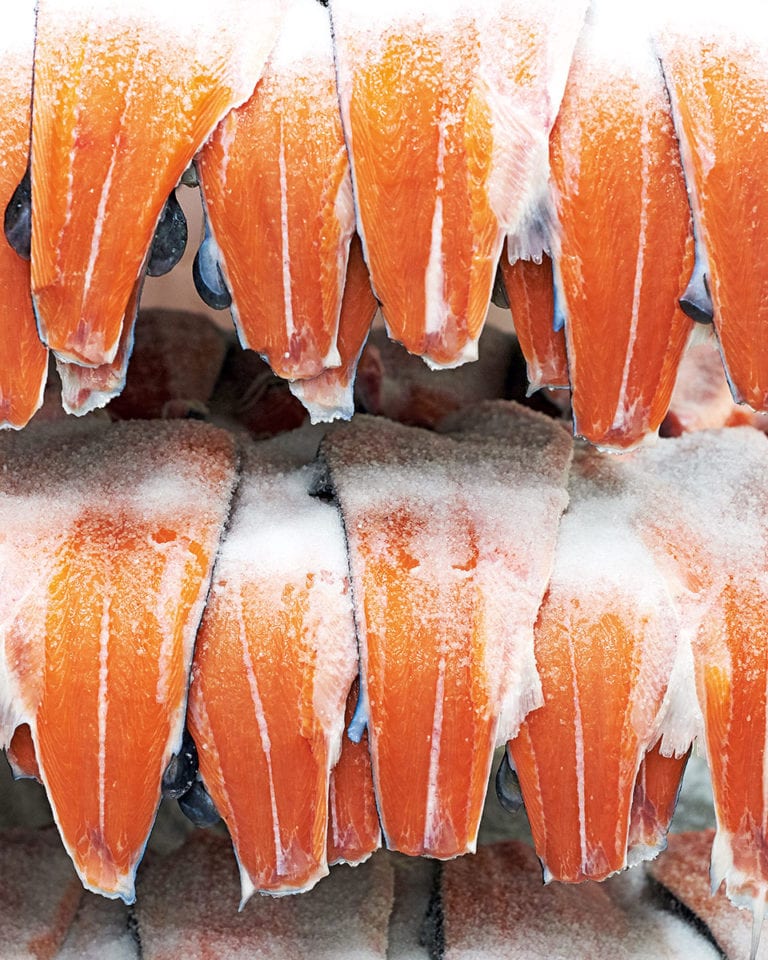
“Smoked salmon should not really taste of smoke,” fourth-generation fish-smoker Lance Forman says adamantly when I meet him at his vast East London smokehouse, on the appropriately named Fish Island. “The point of the smoke was to preserve the fish in the days when refrigeration was basic. The smoke is like a fine dust particle – it sticks to the outside and creates a seal, and no bacteria can get through.”
When this outer crust, called the pellicle, is removed, what lies beneath is salmon with a remarkable concentrated flavour and a mild smokiness. “The smoke should never overpower it – if you have a beautiful fresh fish, why would you want it to taste like an ashtray?” asks Lance.
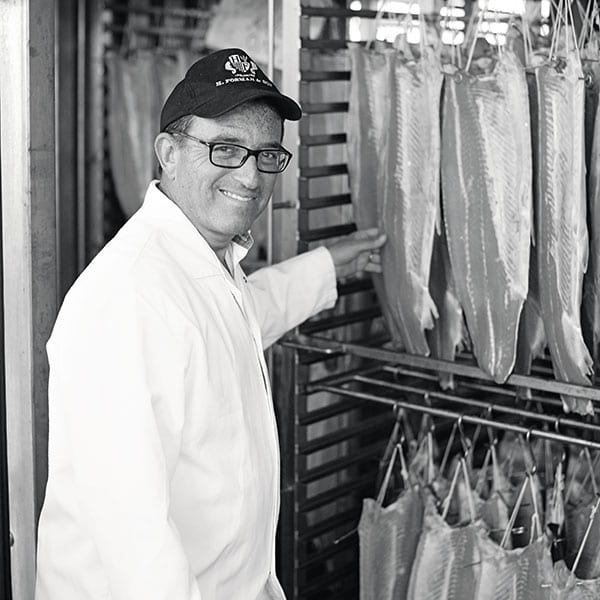
Their traditional approach to smoking salmon
Today, H Forman & Son smoke their fish in much the same way as Lance’s great-grandfather Aaron ‘Harry’ Forman and his son Louis, the company’s namesakes, did when they established the business in 1905. A Jewish immigrant from Eastern Europe, Harry was one of many who set up shop smoking fish in London’s East End in the early 20th century. Today H Forman & Son is the last of this old guard.
At first, fish was imported from the Baltic, brined and in barrels, before smokehouses caught wind of fresh salmon arriving from Scotland at nearby Billingsgate Market. “A lot of people think it’s an ancient Scottish tradition,” explains Lance. “But it was the fish that was Scottish, not the smoking.” The company still use Scottish salmon today because of its superior quality – both farmed and wild Scottish salmon have Protected Geographical Indication (PGI) within the EU.
All the farmed salmon H Forman uses is RSPCA-assured, and Lance has a strict buying policy: every fish must reach them within 48 hours of leaving the water, which rules out using Norwegian salmon popular with other producers. “It’s crucial, not only in terms of taste but also nutritional value,” says Lance. “I laugh when I read on other people’s smoked salmon packaging: ‘After we smoke our salmon we leave it to mature for three days before we carve it.’ Fish does not mature – it just goes off. With fish, it’s all about the freshness.”
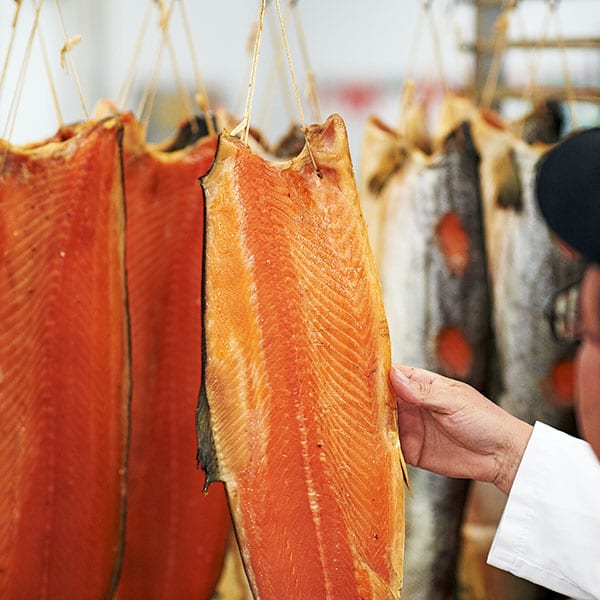
This is how they do it…
The transformation begins in the early morning, when a new arrival of gleaming, silvery salmon is filleted by hand. The rib and pin bones are left in the fillets to give more flavour to the fish when smoked, and two circular patches are cut out of the skin to ensure even smoke penetration. The fillets are laid out under a snowy blanket of rock salt to cure; over the next 24 hours they’ll lose 10 per cent of their water content. They’re rinsed, then put in the kiln to gently air-dry and lose more moisture, then smoked for 12-24 hours, depending on the quantity and size of the fish.
The salmon is cold-smoked at a temperature of 28-30°C by friction-burning solid oak logs. This method is one of the company’s few concessions to modern technology and provides greater control and improved purity compared to burning sawdust. “When you buy a bag of sawdust, you don’t know what you’re buying,” says Lance. This process is more environmentally friendly, too. “Because it’s a solid piece of oak, it’s dense, so you use less of it. To produce the same amount of smoke with loose sawdust you’d need a lot more – you’re chopping down four times as many trees.”
The entire process takes roughly four days, and the result is in consumers’ hands the same day it leaves the kiln. “Smoking the fish slows down its deterioration rate, but the salmon stills tastes best the day after it’s smoked,” says Lance.
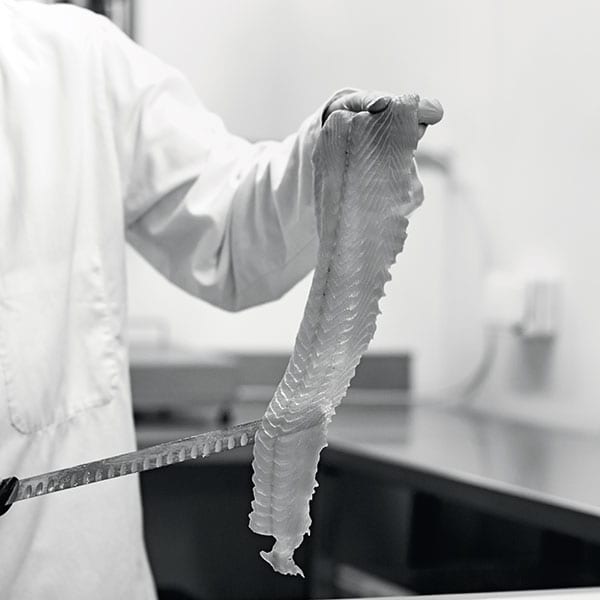
London’s first ever protected food
It’s this distinctively simple London Cure that is H Forman & Son’s jewel in the crown, and in 2017 it was awarded PGI status after a four-year campaign by Lance, in recognition of its significance to the local area. No other food or drink in the capital has been granted it to date, including London gin. “We’re proud of that,” nods Lance. “We think every restaurant in London worth its salt should use London Cure smoked salmon. If you went to the Champagne region of France there’s not a hope in hell they’d serve prosecco! It’s part of the heritage of London’s food culture.”
The business regularly runs tours and windows into the factory area give an overview of the whole process. “There’s nothing complicated about what we do,” confides Lance. “The hard thing is being able to do it consistently, day after day, for 100 years. That’s the challenge.”
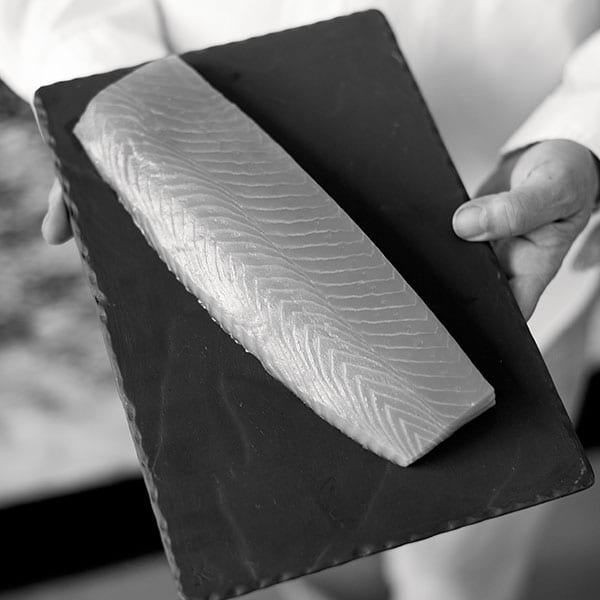
A trinity of disasters
A challenge it has been. Soon after Lance took the reins from father Marcel in the 1990s, a trio of tragedies struck. In 1998 a fire gutted the factory, where the business had been based for the previous 40 years; just 18 months later the refurbished site was flooded. New premises were built nearby, but within two years Lance learned that the land was wanted for the 2012 Olympic Stadium, and 350 businesses in the area were issued with compulsory purchase orders. Thorny negotiations ensued (about which Lance penned a tell-all book) and the result in 2007 was a new complex for the business, which includes a restaurant, art gallery, venue space and facilities for a fine food retail arm, Forman & Field.
It’s clear Lance is a shrewd businessman – he has brought Forman’s smoked salmon to consumers via the web and supplying supermarkets – and he isn’t shy about singing his product’s praises. He reels off myriad reasons why mass-produced smoked salmon is inferior, from the use of heavy smoke or sugar to mask less-than-fresh fish, to improper curing. Or the use of liquid smoke and brine to minimise the weight lost. “In our view it has completely devalued and ruined the good name of smoked salmon,” says Lance. “A lot of people don’t like smoked salmon and I don’t blame them – a lot of it’s pretty unpleasant, smoky and slimy.”
A common commercial practice is to keep the protective pellicle, which takes the brunt of the smoke, on the fish and slice the entire fillet mechanically (look for telltale brown edges on slivers of smoked salmon – an inferior product in Lance’s eyes). H Forman repurposes its pellicle for pâté and also sells it as jerky.
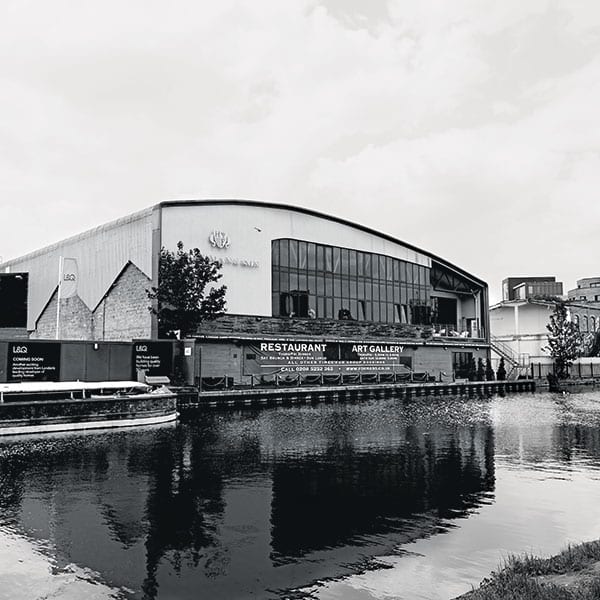
The Produce Awards Editor’s Choice: the royal fillet
Salmon has fatty and lean cuts, a fact that Forman’s is keen to highlight, and you can choose which you want when ordering through their website. “If you roast a chicken, everyone knows to ask, ‘Do you want the leg or the breast?’” says Lance. “It’s the same thing.”
The royal fillet, our 2017 Produce Awards Editor’s Choice, is cut from the leanest part of the smoked fillet. “It’s the fillet steak of smoked salmon,” Lance says proudly, offering me a slice. It glistens like a ruby and melts in the mouth with a clean salmon flavour and just a hint of smoke. A product of undeniable quality, heritage and skill, it’s not just worth its salt, but also its weight in gold.
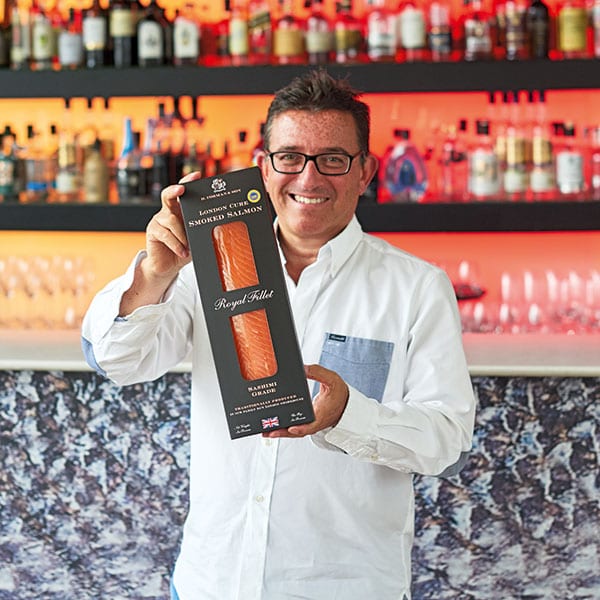
Subscribe to our magazine
Food stories, skills and tested recipes, straight to your door... Enjoy 5 issues for just £5 with our special introductory offer.
Subscribe
Unleash your inner chef
Looking for inspiration? Receive the latest recipes with our newsletter
